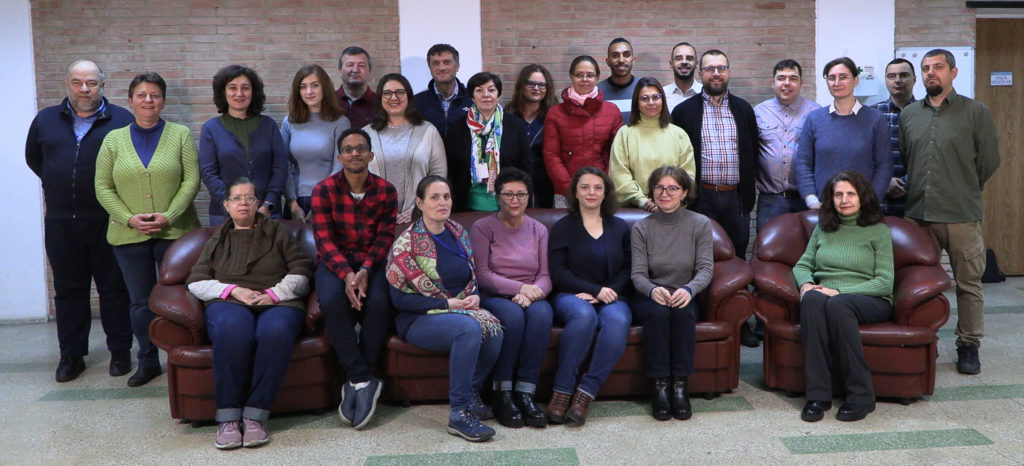National Institute Of Materials Physics - Romania
Complex Heterostructures and Multifunctional Materials

Our research activity relies on highly educated/trained human resources and topmost scientific infrastructure. The HeCoMat team comprises of 33 active members, including 28 with permanent contracts and 7 with short-term contracts. From the 27 members with permanent contracts, 6 are Senior Researchers rank 1 (SR 1), 6 are Senior Researchers rank 2 (SR 2), 7 are Senior Researchers rank 3 (SR 3), 2 are Senior Researchers (SR), 2 are Junior Researchers (JR), 3 are engineers, and another one is technician. From the members with permanent contracts, 21 possess PhD titles (in physics, chemistry, materials engineering or medicine) – including 1 PhD supervisor. Three of the HeCoMat’s team members are PhD students, and 1 is MSc student.
Main research topics:
- Ferroelectric materials and related structures for electronic, optoelectronic and sensing applications (including non-volatile memories, UV and IR detectors, piezoelectric devices);
- Materials and devices with applications in microelectronics, photovoltaic conversion and light/particle detection (including field-effect transistors, hybrid perovskite and kesterite solar cells, and silicon-based particle detectors);
- Superconducting and magnetic materials and strongly correlated electron systems;
- Dielectric and ferroelectric materials for microwave devices (e.g., dielectric resonators, ferroelectric varactors, filters, antennas);
- Materials for healthcare applications (prominently for bone regeneration).
Latest Publications
Published: JUN 2025, JOURNAL OF PHYSICS AND CHEMISTRY OF SOLIDS, 201, 112654, DOI: 10.1016/j.jpcs.2025.112654
Published: MAY 2025, PROGRESS IN PHOTOVOLTAICS, 33, DOI: 10.1002/pip.3899
Published: APR 25 2025, JOURNAL OF MOLECULAR STRUCTURE, 1328, 141299, DOI: 10.1016/j.molstruc.2024.141299
Published: APR 15 2025, ACTA MATERIALIA, 288, 120837, DOI: 10.1016/j.actamat.2025.120837
Published: MAR 31 2025, INTERNATIONAL JOURNAL OF HYDROGEN ENERGY, 114, DOI: 10.1016/j.ijhydene.2025.03.048
You can find us here!
Copyright © 2025 National Institute of Materials Physics. All Rights Reserved